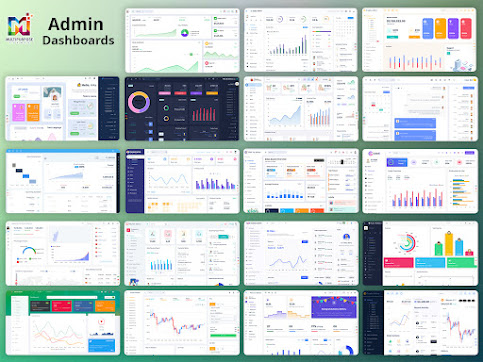Admin Dashboards have become essential tools for managing web applications and internal systems. As web apps grow more complex with additional features and larger user bases, having an intuitive, information-rich admin interface is crucial. Modern admin dashboards provide a central hub to monitor and control all aspects of an application.
An Responsive Admin Templates typically consists of pages and widgets for viewing analytics, managing content, monitoring systems, and configuring settings. The dashboard allows admins to get high-level overviews as well as drill down into granular data. Well-designed dashboards are optimized for comprehending complex data at a glance. Such Webapps have a higher chance of becoming successful.
Key Features of Modern Admin Dashboards
Modern admin dashboards include a variety of features to help streamline workflows:
- Customizable layouts and widgets – A WebApp Templates allow admins to arrange widgets and tailor layouts to their preferences. Drag-and-drop interfaces make it simple to organize data.
- Responsive designs - With many admins accessing dashboards on mobile devices, responsive designs are essential, automatically optimizing layouts for any screen size.
- Real-time data and updates - Instant data updates enable admins to monitor live analytics and user activity as it happens. Real-time tracking fosters quicker reactions.
- Interactive visualizations - Charts, graphs, and gauges allow complex data to be grasped easier through visual representations. Interactive elements help highlight key trends.
- Notifications and alerts - Proactive alerts for technical issues, traffic changes, user reports, and more allow admins to respond to problems faster.
- Role-based access control (RBAC) - By limiting access for various user roles, RBAC enables secure collaboration between admins, editors, and guest users.
- API integrations - Integrating with third-party APIs makes it possible to pull relevant data from external platforms into the dashboard for consolidated analytics.
- Custom branding - To align with company branding, dashboards allow elements like color schemes, logos, and themes to be customized.

No comments:
Post a Comment